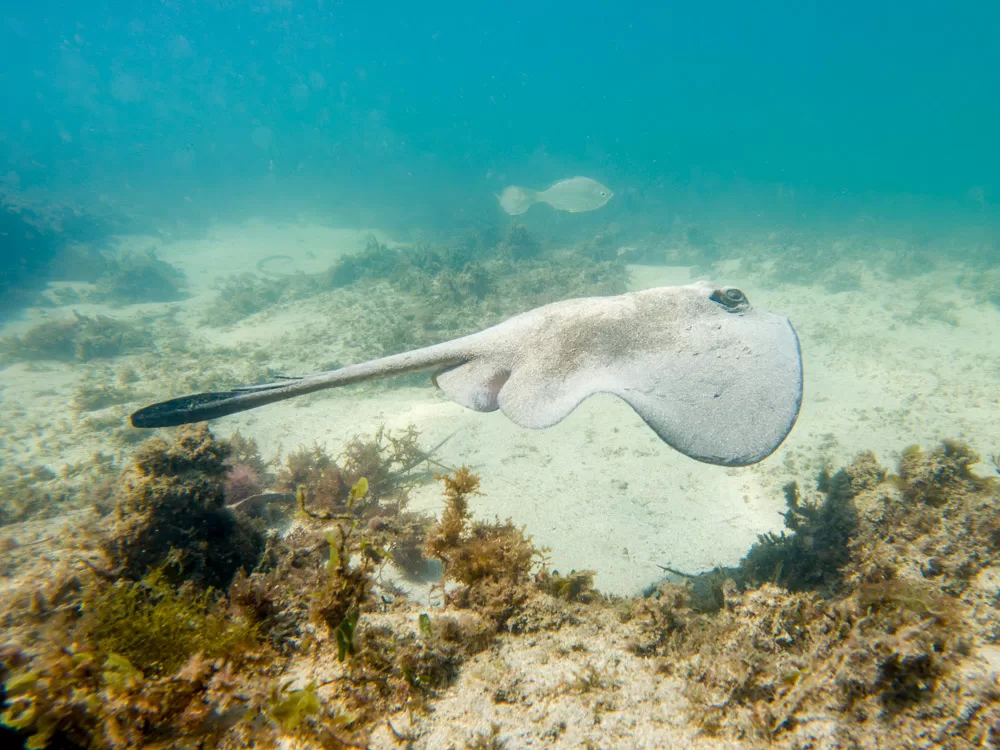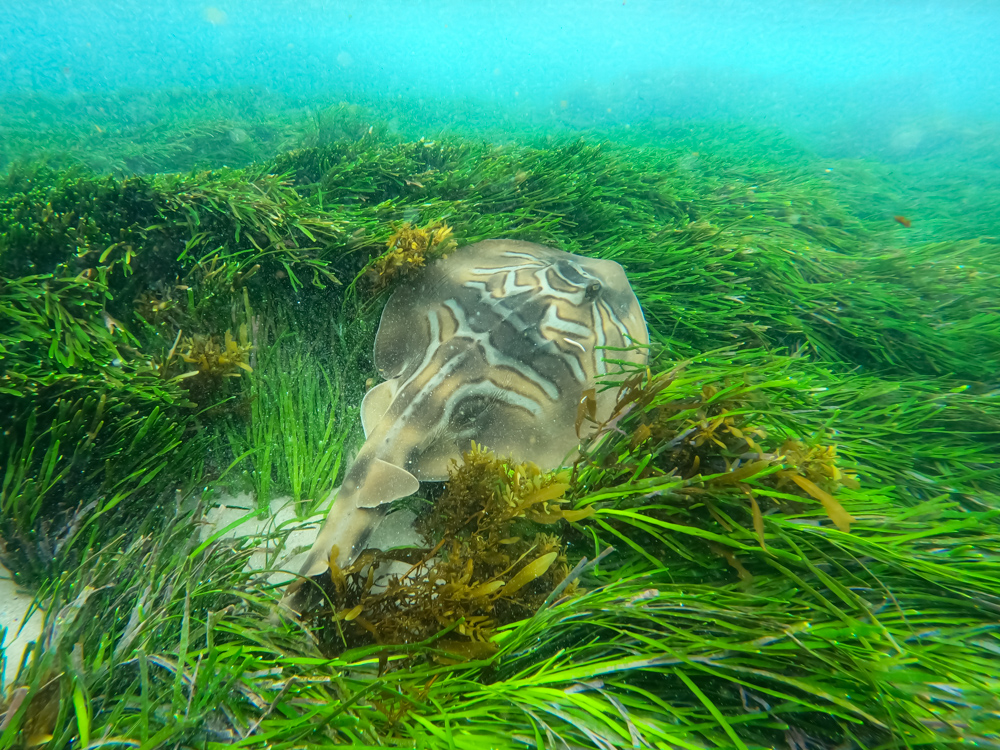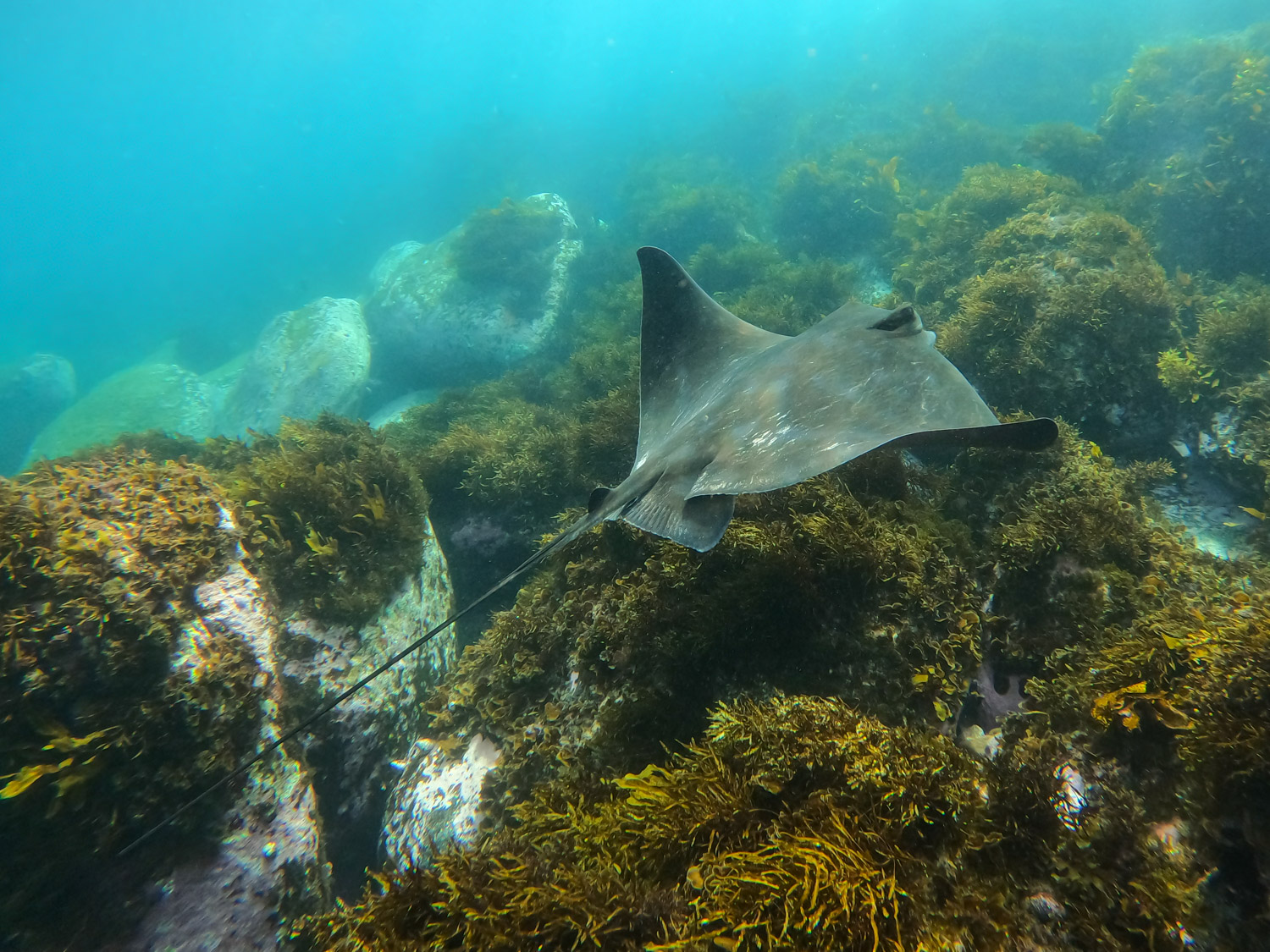The common stingaree, is a common sight on beaches around New South Wales. This species, scientifically known as Trygonoptera testacea, thrives in sandy and muddy environments. Its flattened body and mottled appearance provide perfect camouflage against predators.
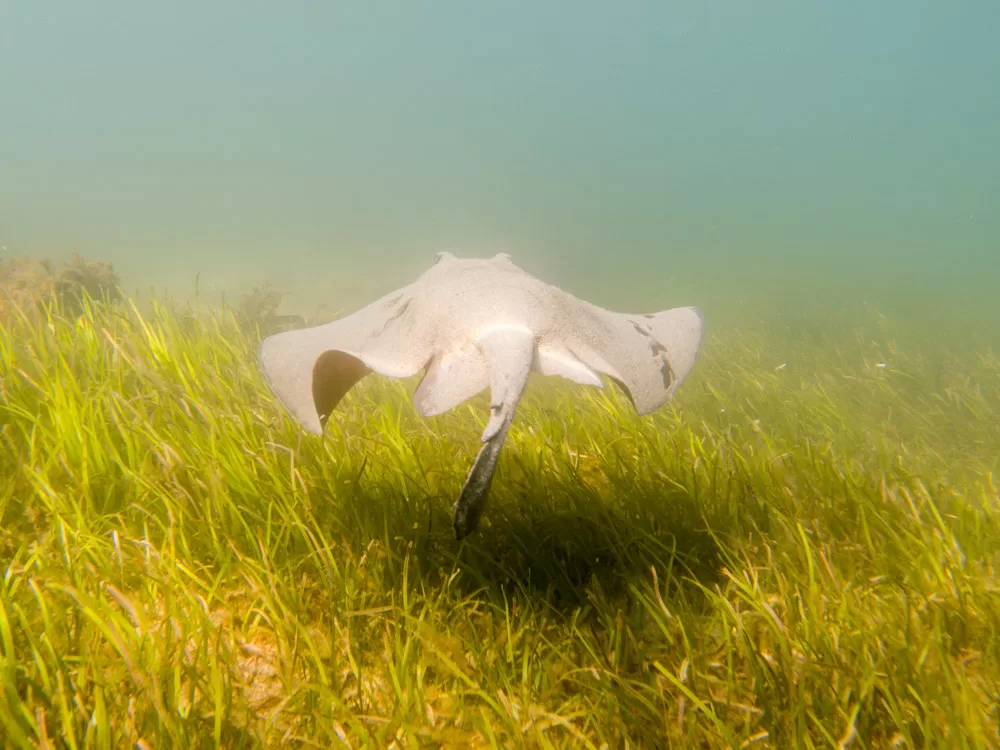
Identification
The common stingaree’s physical features include a broad, diamond-shaped disc and a relatively short, whip-like tail that lacks a prominent fin. Its upper surface is typically a blend of yellow and brown hues, often speckled with darker spots, which helps it blend seamlessly with the sandy and muddy seabeds it inhabits. One of the most characteristic features of this species is the presence of a venomous spine located midway along the tail, which it uses defensively against potential threats.
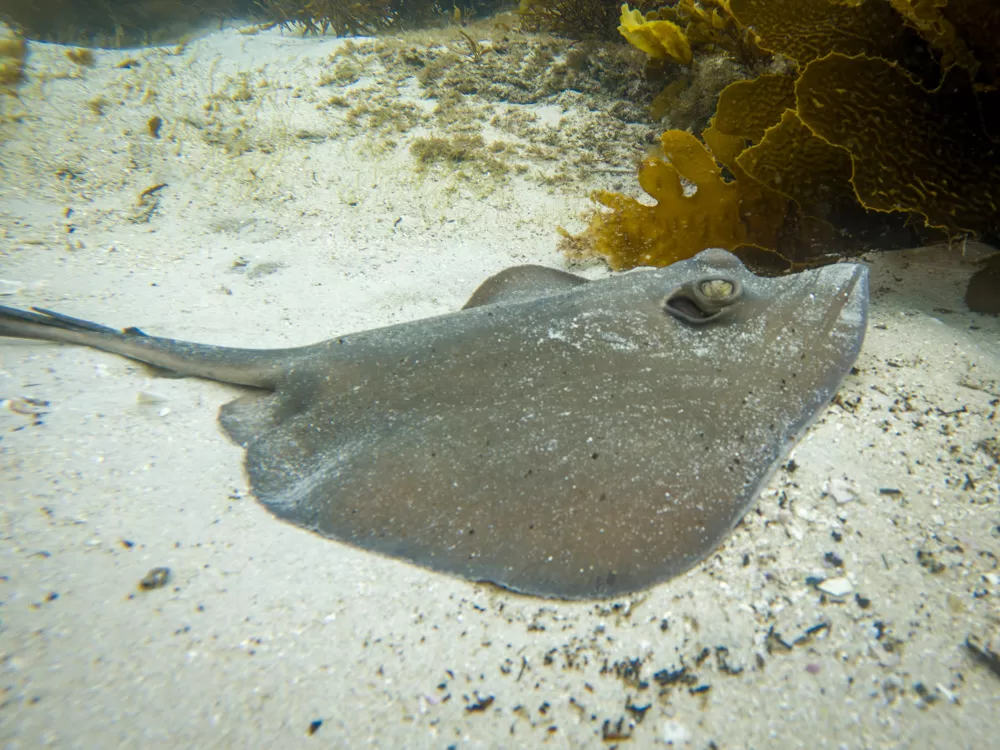
The underside of the stingaree is usually much lighter, ranging from white to pale yellow. This provides an added layer of disguise from predators lurking below. These identification markers are crucial for distinguishing the common stingaree from other similar stingray species found in the same waters.
The distinct shape of the caudal fin distinguishes stingarees (family Urolophidae) from other rays such as stingrays and skates. Along the coast of New South Wales, at least six species of stingarees are known to reside.
Distribution and Conservation
The common stingaree is endemic to the temperate waters off southern Australia, particularly prevalent from New South Wales to eastern South Australia and around Tasmania. This species is typically found at depths ranging from shallow coastal margins to deeper offshore waters, up to about 200 meters. Despite its wide range, the common stingaree faces several conservation challenges, including habitat degradation and the impact of commercial fishing, where they are often caught as bycatch.
Want to identify that fish? Gerald R. Allen’s field guide has the largest species coverage of them all, and is very well illustrated.
Currently, the IUCN classifies the common stingaree as “Near Threatened” indicating that while not at immediate risk of extinction, its population is under pressure and decreasing. continuous monitoring of their population and habitat is essential, as changes in marine environments and fishing practices could quickly alter their conservation status.
Behaviour and Character
The common stingaree exhibits intriguing behaviours that are adapted to its bottom-dweller lifestyle. It is primarily a nocturnal creature, spending much of the day buried under sand or mud to camouflage itself from predators and potential prey. This cryptic behavior is a defense mechanism as well as a hunting strategy, allowing it to ambush smaller fish and crustaceans that venture too close. The stingaree is also known for its slow and graceful movements, often undulating its edges to swim or stirring up the substrate with sudden bursts of speed when disturbed.
Despite its venomous tail spine, which serves as a formidable deterrent against predators, the common stingaree is generally a docile species. It will avoid confrontation unless directly threatened. They are curious and playful animals when there are divers and snorkelers around. But as with all marine life, people must respect stingrays’ personal space. This combination of stealth and passive defence showcases a highly adapted survival strategy within its natural habitat.
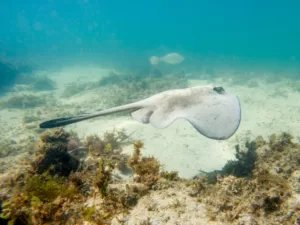
Distribution
Southern Queensland to southern New South Wales
Facts
Max Size: 47 cm
Depth: 0-60m
Lifespan: 10 years (estimated)
Risk and Safety
Low risk, has a stinger but will avoid contact.
Conservation
IUCN Status: Near Threatened
Population: Decreasing
